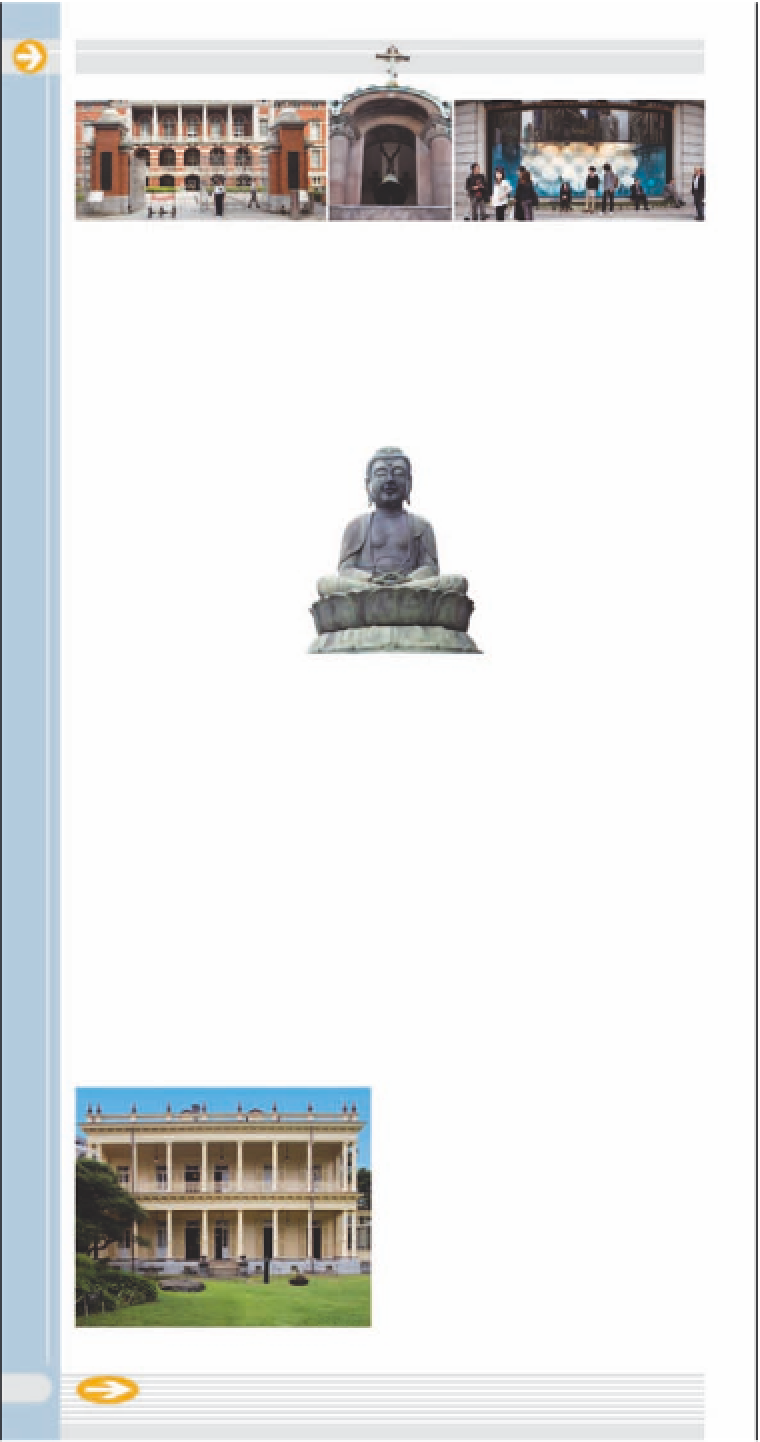Travel Reference
In-Depth Information
Left
Ministry of Justice Building
Center
Nikolai Cathedral
Right
Hattori Building
Historic Buildings
!
Bank of Japan
Pennsylvanian country styles.
Original features include coffered
wood ceilings, stone fireplaces,
parquet flooring, and Japan's first
Western-style toilet.
d
Map F2
• 1-3-45 Ikenohata, Taito-ku • 3823-8033
• Open 9am-5pm • Adm
The bank's solid Neoclassical
outline was designed by Tatsuno
Kingo, Japan's first Western-style
architect. The 1896 building
stands on the old site of the
shogunate's former mints. A
guided tour in English intro-
duces the structure, as well
as its history and present-
day function
(see p68)
.
@
Crafts Gallery
$
Gokoku-ji Temple
The temple grounds
have some interesting
features, including a
belfry and a rare two-
story pagoda. The main
hall, with its colossal
wooden pillars, massive
copper roof, and dark
interior full of priceless Buddhist
artifacts, is the centerpiece of
this grand complex
(see p36)
.
%
Hattori Building
The finely finished,
Meiji-era structure,
which houses the Crafts
Gallery, originally served
as the headquarters of the
Imperial Guard. Built in a style
that came to be known as “19th-
century Renaissance,” it is one
of the few protected buildings
in a city notorious for its weak
preservation ethic
(see p67)
.
#
Kyu Iwasaki-tei Mansion
Buddha statue,
Gokoku-ji Temple
The 1932 structure, created
by Watanabe Hitoshi, is a Ginza
landmark. It is also known as the
Wako Building, after the jewelers
it houses. With its curving front-
age and clock tower, the building
appears as a backdrop in several
old movies. The grand interior
is as impressive.
d
Map M4 • 4-5-11
Ginza, Chuo-ku • 3562-2111 • Open
10:30am-6pm
A fine example of Meiji-era
syncreticism, this grand 1896
wooden residence was built by
English architect Josiah Conder
in a mix of Jacobean, Gothic, and
^
Hongan-ji Temple
Even in a city known for its
architectural hybrids, this temple,
strongly suggestive of Indian
architecture, is an extraordinary
one. Its designer, Ito Chuta,
traveled all over Asia and this
is reflected in his 1935 building,
where he pays homage to the
Imposing façade of Kyu Iwasaki-tei Mansion
48





































